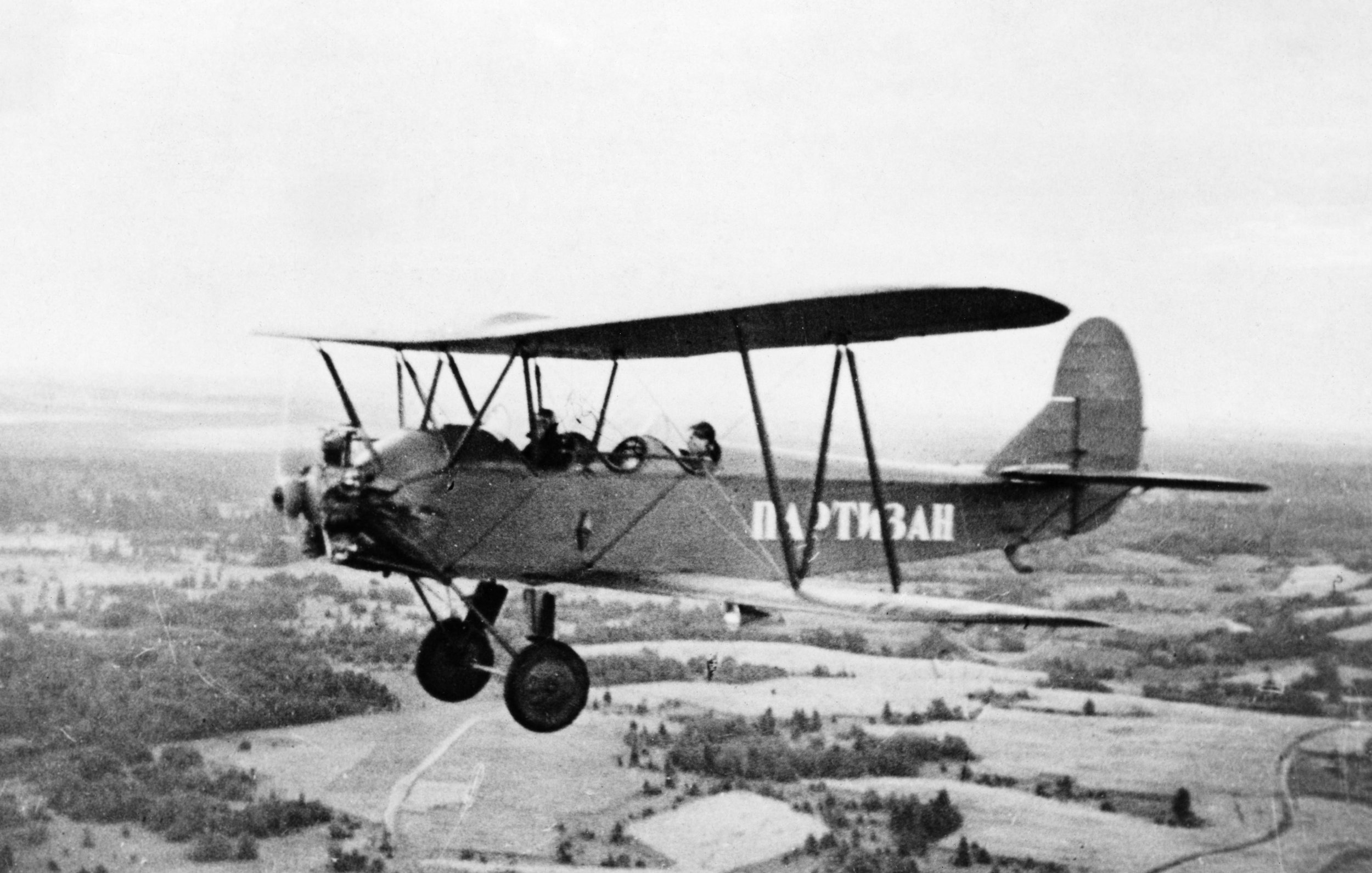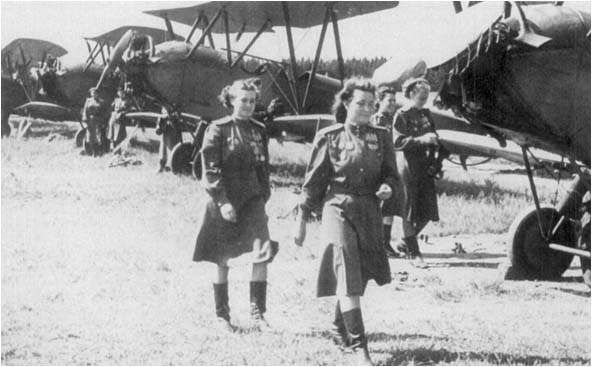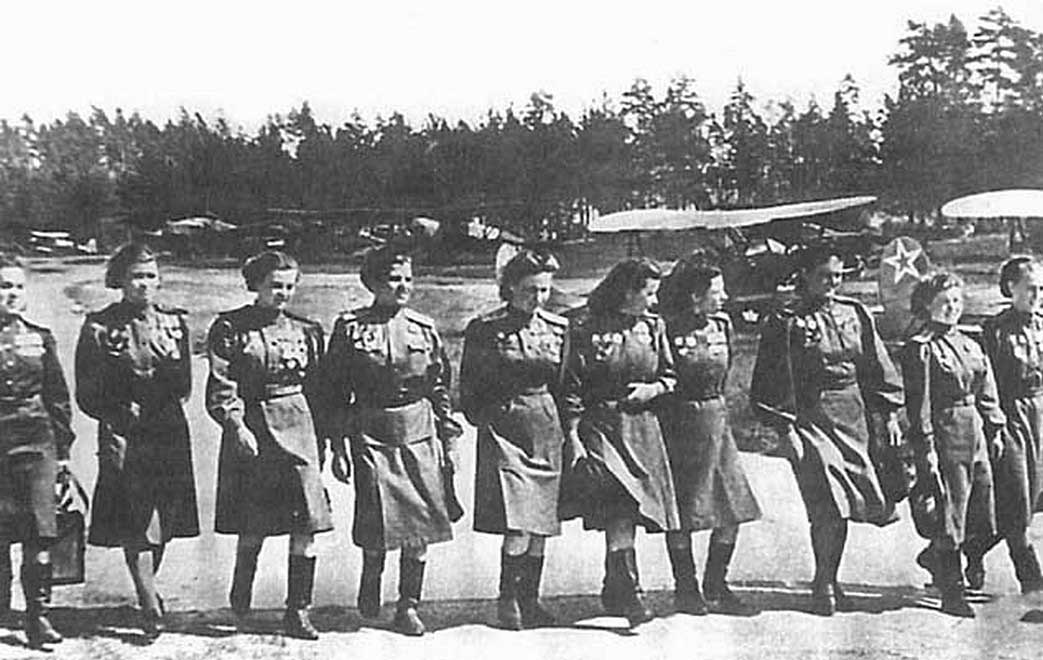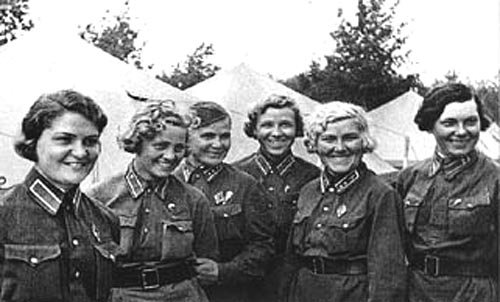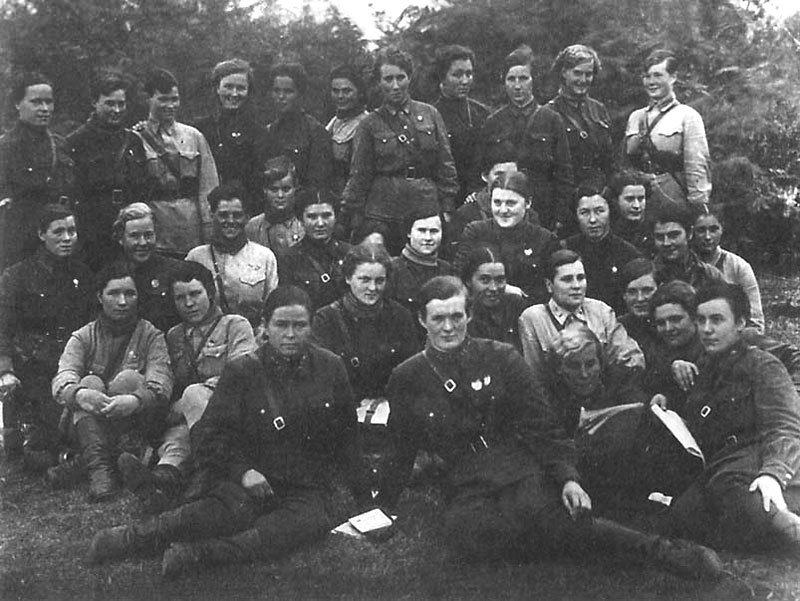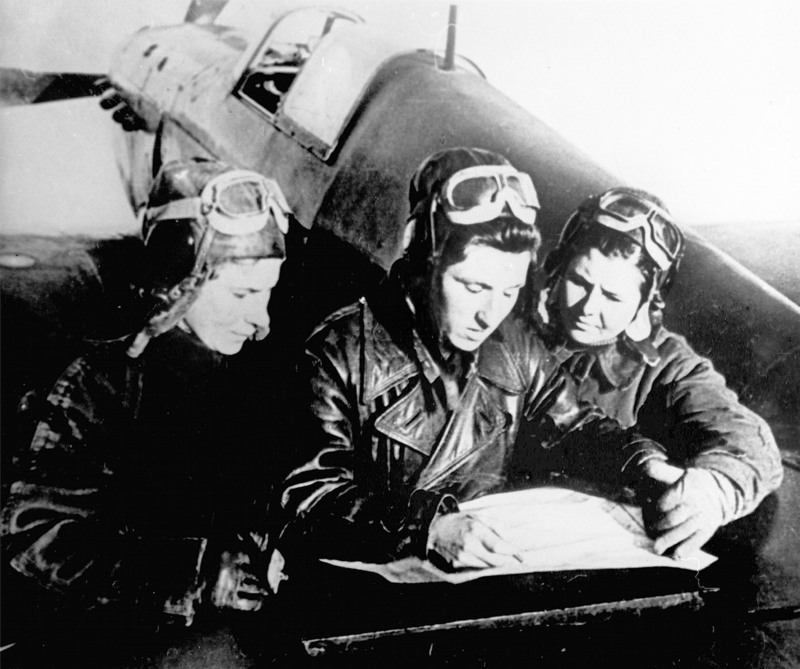PETROLETTES IN HISTORY: The Night Witches

COLOURED ARCHIVE IMAGES | OLGA SHIRNINA
Operation Barbarossa was the infamous Axis invasion of the Soviet Union, which led to massive bloodshed during World War II. Within two years of signing a non-aggression treaty with Soviet Union dictator Joseph Stalin, Adolf Hitler had deployed over four million soldiers into the Soviet border on June 22, 1941. Hitler’s zealous attempt to lay siege on the Soviet territory amassed over 775,000 German casualties, 800,000 Soviet casualties, and six million Soviets wounded or captured.
Marina Raskova (1912-1943), one of only three of the first women to be awarded with The Hero of the Soviet Union prior to World War II.
The staggering decline of Soviet manpower at the height of the blitzkrieg attacks prompted Stalin to take any measures necessary to defend his territory. Women from all across the land wrote in ready to fight. Women who had lost brothers, women who had lost fathers, women who had lost sweethearts and husbands, and women who had nothing to lose were all ready to join the fight against the Third Reich.
Marina Roskova made history for breaking stereotypes and records alike. She was deemed the “Soviet Amelia Earhart”, but I think her name and her story is more than enough to stand alone. She was the first woman in the Soviet Union to become a navigator for the Air Force, the first woman to teach at the Zhukovskii Air Academy, and the woman who convinced Joseph Stalin to create the first all-female Aviation Corps. Deputy Commander Irina Rakabolskaya tells how the first slogan of the regiment brought upon by Roskova was: "You are a woman and you should be proud of that."
Three squadrons comprising of about 400 women aged from late teens to early twenties entered into a world unknown to them. At the Engles School of Aviation, they underwent intensive training in aviation, mechanics, and navigation using leftover and cheap utensils such as paper, pencils, compasses, and flashlights in order to figure their way through obstacles. Their ill-fitting uniforms were hand-me-downs from the men of the Air Force, but their meager resources were no match for the heart that they all possessed.
The most decorated regiment to flourish from this movement (and the only to remain all-female in operation until the end of the war) was the 588th Night Bomber Regiment (588 NBAP), more notoriously known as the Night Witches by their German opponents. The unit flew over 24,000 missions in combat over the following four years of war, and produced 23 recipients of the “Heroes of the Soviet Union” (editors note: the average number of recipients per regiment was only around 3). Their revenge amassed a total of 23,000 tons of bombs dropped on enemy troops.
Natalya Meklin, awarded the 'Hero of the Soviet Union', was 19 when she joined the Night Witches.
“Marina Roskova was convinced that when women fought together there were stronger ties of friendship between them than with men… Women, she was convinced, had a much stronger sense of responsibility to each other in a combat situation than men did” (excerpt from “To the Skies (Other Short Stories)” by Fred Bazler).
The name Night Witches or Nachthexen in German was cursed to them as they became some of the most feared pilots of the sky. The ladies operated in the dead of night, not to mention the freezing temperatures of winter. They were granted meager resources, including wooden biplanes that were so small they couldn’t be picked up on radars, and so light they had to lie down on the wings in order to keep from blowing over during the winter storms. These planes could only hold two women and two bombs, and not much else. They didn’t use radios, so radio locators couldn’t find them.
Foregoing parachutes, they flew at low altitudes and perfected a craft of stealth and tight maneuverability. Their tactic was as follows: two planes would set out side-by-side to act as decoys, and a third followed along behind them. The first two would grab the attention of the German searchlights below and then scatter, causing a flurry amongst the German troops below. The third would utilize the dark space, shut her engine off and drop her bombs below. The enemy on the ground would only hear the whirl of the wind as the plane and bomb passed by, right before impending doom. Herein lies the background of their critically acclaimed name, "the Night Witches".
“They were basically ghosts”
The Night Witches posed as one of the greatest threats in the War against Germany. Although they only had two bombs per mission, they would restock and perform up to eighteen missions a night and continued at that pace until the end of the war.
“I could go on talking about it because we had been fighting for one thousand nights - one thousand nights in combat. Every day the girls became more courageous. To fly a combat mission is not a trip under the moon..... Every attack, every bombing is a dance with death. In spite of this, every girl knew the danger and none ever refused to fly her mission or used a pretext to avoid participating in a bombing. Our feelings were that we were doing a simple job, just a job to save our country, to liberate it from the enemy.”
From pilots, to mechanics, to navigation, and beyond... the 588th Regiment of Night Witches has gone down in history as a pact between women to prevail in spite of all the obstacles. They rose to the challenge to protect and serve and they swore to defend their rights as women to build, lead, and fight. As the first nation to officially allow women in combat, the Night Witches serve as a beautiful reminder of the power of sisterhood, even today.
Editor's note: The below documentary footage is by Gunilla Bresky. It is the first of six parts (also found here), and includes interviews (in Russian, with English subtitles) with some of the original pilots and navigators of the Night Witches. In full it runs for close to an hour, but is well worth the effort.
Kristen is an old soul. Generous and kind, she is forever pushing her own boundaries and encouraging greatness in others. When she isn’t riding bikes, she’s under them (she’s a trained motorcycle mechanic, and could teach you more than a thing or two). Kristen is IVV’s Content Editor and US correspondent, bringing tales of her adventures across the interwebs to inspire and invigorate.



